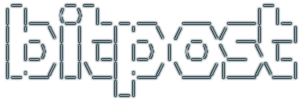When I have some downtime, I tend to “reassess my life” lol. And my primary pain point in my nerd dev life has been my abusive requirements of my ever-failing browsers.
So far my best solution was terrible: use firefox for everything i can possibly use it for to support FOSS and get privacy, use ublock origin everywhere, use chrome for dev for performance, then switch to use firefox for dev when sick of problems (solved, nothing, ff has all kinds of problems too), use chrome for personal stuff that needs creditcards since FF is borked, use ff profiles – broken, use chrome profiles – broken, be told by FF that i can’t open or refresh tabs until i restart due to behind the scenes updates (this really broke my ability to justify FF), completely swear off chrome bc i don’t want big brother watching my every keystroke, have ff or chrome spew tabs everywhere on the wrong i3 desktops, go mad fixing them all…. nearly die from the stress of virtual memory hell as multiple browsers and dozens of profiles and thousands of tabs bring my machine to full lockup… BAD BAD BAD.
Brave solved it all.
It’s another chromium variant. This is excellent because it is FOSS and also enhanced beyond the things that Google has left broken in vanilla chromium. There are several chromium enhancements out there that are a huge step forward from FF or Chrome. Vivaldi is another fun one I played with. But let’s go over how Brave is leveling me up:
- Wonderfully done multiple profiles, clearly marked with toolbar icon and color
- Profile sync across machines with a simple set of “sync code” words
- Profile reuse in Visual Studio Code javascript debugger (see wiki)
- Chromium extensions support
- Ad blockers built in, with opt-in to see ads and make money (no thanks tho)
- Tor built in to private windows
- One browser that does it all, saving me from gobs and gobs of memory allocations and CPU hogging trying to run multiple browsers
- And that juicy chromium blink and V8 javascript engine speed
P.S. I LOVE you Mozilla but you need a complete rewrite in asm/C/C++ to keep up with Chromium’s performance… and STOP with the crippling freeze-on-background-updates. Please keep trying.











